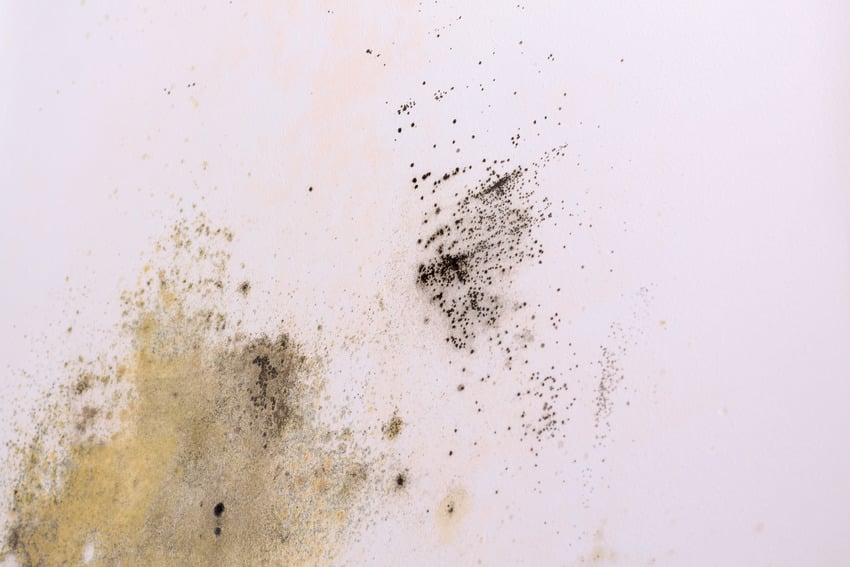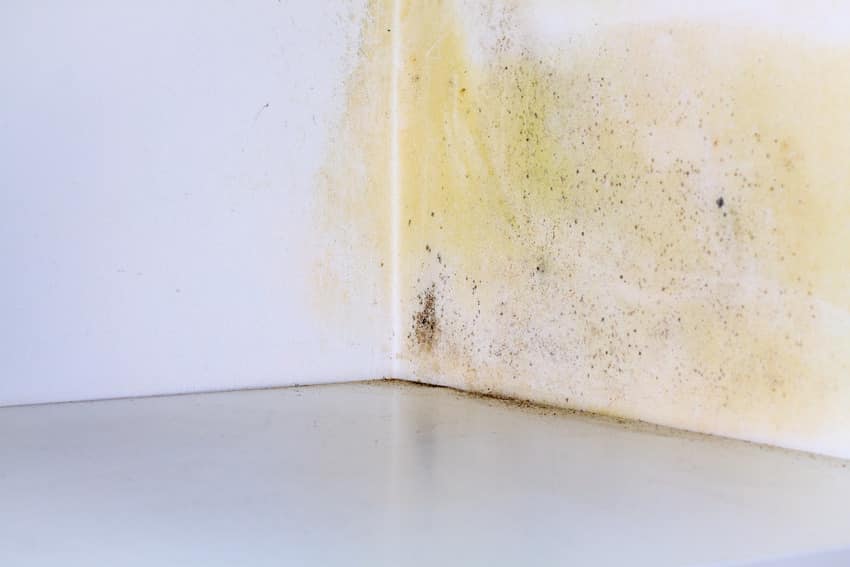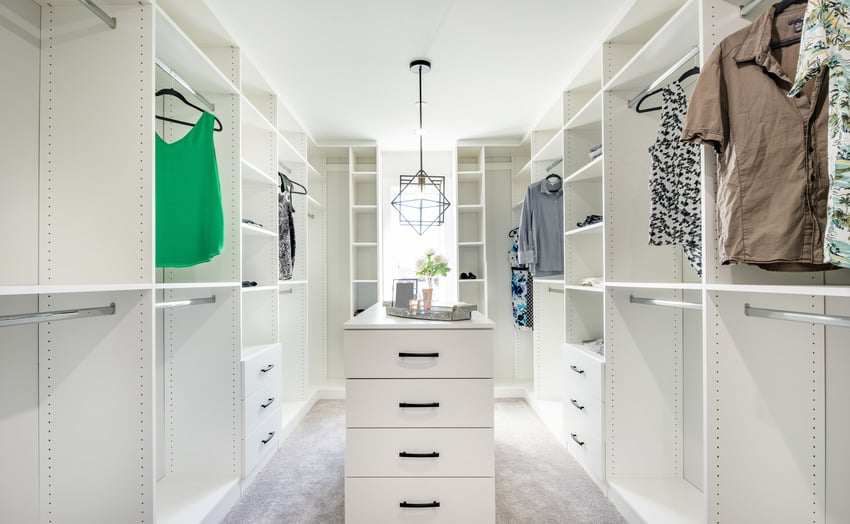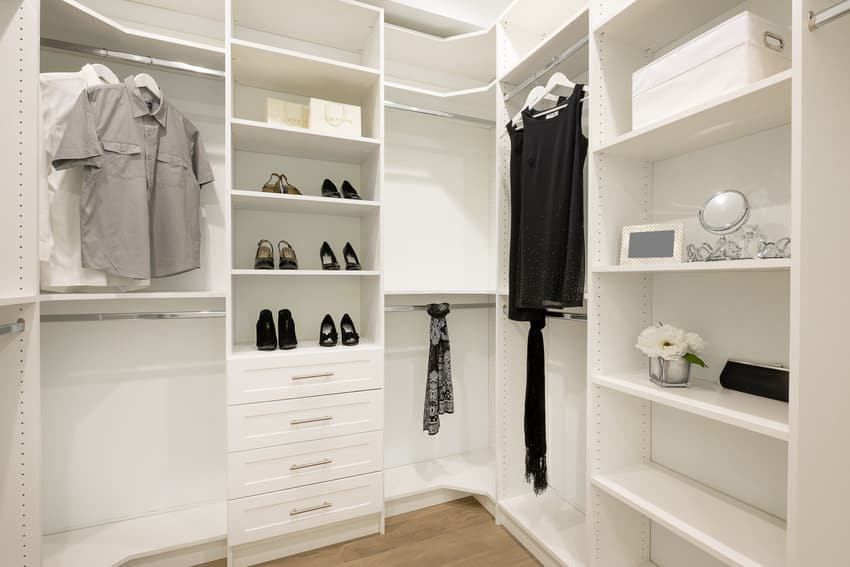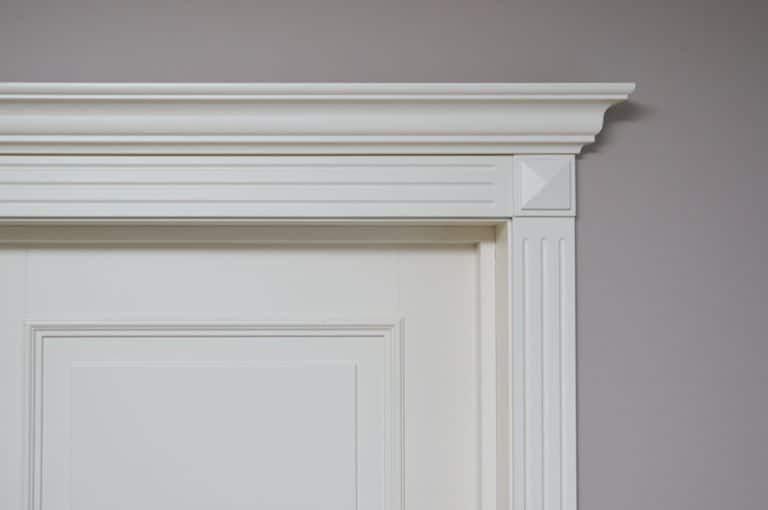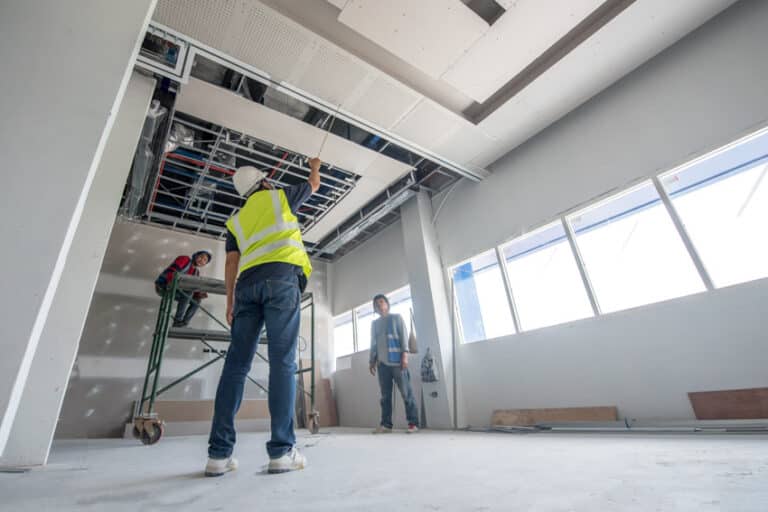Mold in Closet (Causes, Removal & Prevention)
Stachybotrys chartarum, Aspergillus, Cladosporium, Penicillium, and Alternaria—no, they’re not fancy names for your next house plant collection. In fact, these are five of the most common types of mold that cause significant health issues in households. In our mold in closet guide, you’ll find helpful tips to prevent and completely get rid of mold in your closet.
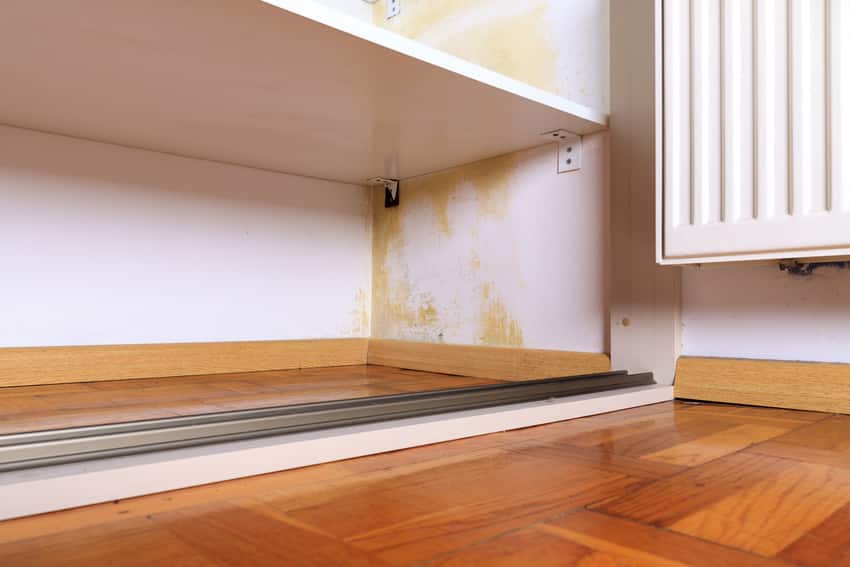
The Centers for Disease Control and Prevention (CDC) estimates that there are roughly 10,000 indoor mold species. Meanwhile, closets are basically the keepers of the wardrobe. Sometimes, they even store our most sacred treasures safely tucked away in the room.
But if you’ve started noticing unsightly mold and mildew creeping on your closet walls, what can you do to reclaim your cubbyhole? Read on and check out the practical tips to get rid of pesky molds in your closet for good.
What Causes Mold in a Closet?
Why do molds love closets? Even when you keep your things clean and organized, it seems that mold and mildew keep coming back. Why is that so?
Actually, it takes more than just moisture to keep the fungus happily thriving. In particular, they also survive in places that have poor air circulation and are exposed to any wooden structure.
Getting rid of any of these factors is enough to completely eliminate mold in your closet. However, moisture is probably your worst enemy when it comes to mold, which possibly stems from:
Leaky Pipes. Most closets are adjacent to a bathroom or kitchen where pipes run through the available wall gaps.
Leaks are usually hard to detect and may only be noticeable once the slightest hints of yellow patches or black stains have become apparent on your closet walls. Tip: Hire a reputable plumber for any plumbing installation, repair, or renovation.
Leaky Roof and Gutters. Your roof is basically the first line of defense against water. A damaged roofing or gutter system, despite how little the damage is, will eventually cause water leaks inside your home in no time.
Leaking Attic. A leaking attic may be hard to detect since it’s mostly stuffed with things that obscure your view of the walls and even ceilings.
Take note that damaged storage tanks and plumbing systems running through your attic are common sources of a water leak. Read more about our article on the different types of attics here.
Damp Clothes. Do you love leather? If you’re the sweaty type and have a penchant for leather clothes and other fabrics that do not air dry easily, then expect the fungus to take over your wardrobe.
This can be a challenge, especially during the rainy or cold months when drying off sweaty clothes takes much longer.
High Humidity. Most closets tend to be closed, which causes the walls to perspire, making them prone to moisture. When moisture sits longer, it is an attractive place for fungus to grow. This is especially problematic in hot and humid weather.
Lack of Air Circulation and Sun Exposure. The lack of air passing through the fabrics and on your walls will make it harder for your items to air dry, making it easy for moisture to form on surfaces.
Moreover, due to their location, closets don’t get enough sunlight and thus can’t take advantage of the sun’s natural antibacterial properties.
How to Get Rid of Closet Mold?
A sure sign that you’ve got molds in your closet is the unmistakable musty smell. But take note that not all molds can be detected by scent.
If a family member experiences itching and other allergy-related symptoms that usually go away every time they leave the house, then it’s pretty likely that you’ve got mold growing in your home.
The peeling and cracking of paint on your closet walls is also a good indicator of water seepage. Mold growth is also apparent when there is excess moisture on your walls.
To make sure if molds are really growing in your closet, it’s probably best to have it checked by a professional mold inspector. But if you’re on a budget, you can also do it by yourself.
Molds are usually black, gray, or yellowish in color. Check for any discoloration in your closet walls that are likely early signs of fungus growing.
Inspect the pockets or grooves of your closet, as there may be molds growing from these folds that can only be detected upon closer inspection.
Spot clean. Remove clothing or items where there is obvious growth of molds, but make sure to have an enclosed hamper or plastic bag where you can directly drop the items without further spreading the spores. Open doors and windows to allow air to circulate. Don’t turn on your air-conditioner.
Empty your entire closet. If you have enough time to spare, then it’s time to clean your entire wardrobe. Dry clean your nonwashable items and tumble wash all your clothes. This is also a great time to inspect your closet for any signs of mildew. Then, you can now clean your closet walls. For painted walls, it’s best to use a vacuum with a soft brush attachment.
Wash your rugs. Rugs in or around closets can be a hotbed for mold and other bacteria growth. Clean your rugs regularly and schedule a monthly dry-cleaning. You can also spot clean using hot water and a cleaning agent.
Fix the source. After emptying your entire closet, check for any source of the leak. If you suspect damaged plumbing as the culprit, contact a plumbing contractor immediately.
But, if you’re unsure of the leak source, it’s best to hire a professional mold inspector, which is a more cost-effective way to get rid of your closet mold for good.
Wash closet walls. Use mold control sprays that work effectively on wood closets. Mold-infested closets are usually caused by external factors such as sweaty clothes because of hot and humid weather and not essentially because of something crucial as damaged plumbing or roofing system.
Mold Cleaning Agents
- Lemon juice and salt
- Peroxygen bleach
- Chlorine bleach
- EPA-approved pesticides
- Spray fungicide
- Oxalic acid for stubborn stain (Check safety precautions)
How To Prevent Mold From Developing In A Closet?
Nothing beats careful preparation and prevention. Here are some helpful tips to prevent mold from growing in your closet to help you save time, money, and energy.
Switch to Louvered doors. These slatted doors not only allow air to circulate easily but also allow sufficient sunlight to radiate into your cabinet.
Provide a separate compartment for outdoor gear. It’s best to store your outdoor gear in the mudroom or patio area. This will prevent spores from the outdoors from spreading to your other clothing items that are stored in the cabinet.
If you don’t have any extra space, you can use breathable plastic to cover your outdoor gear until it’s time to wash or launder them.
Reduce humidity. Extreme humidity can cause perspiration or sweating of surfaces, which is bad news since molds thrive best in these conditions.
You can reduce humidity by using the following:*Dehumidifier – A dehumidifier is an effective way to reduce humidity, especially during blistering hot days. Make sure to empty the collection tray frequently.
*Desiccants – They are a sizable and affordable way to absorb moisture from the air. Some examples of desiccants are silica gel, rock salt, baking soda, chalk, and washed charcoal. These are moisture-absorbing, non-toxic products that you can put in any closet.
Install light well or solar tubes. Consider installing a light well or solar tube for your closet. This is where light is allowed to pass through your ceiling down to your closet using a metallic tube pipe directed through your roof and captures natural light.
With more natural light coming through your closet, the UV rays and radiant heat would ultimately kill the bacteria and help dry off your damp clothes faster.
Install an exhaust fan. Forced ventilation is a suitable option for windowless closets. Consider installing an exhaust fan to drive fresh air into your closet.
To estimate the power needed for your exhaust fan, compute the volume multiplied by 1.5. The result would be the rate of air exchange per hour for your closet.
To install, you’ll need additional ductwork and extensive electrical wiring. Installing a two-way vent above the closet doors is another alternative option.
Tip: Use a hygrometer to monitor humidity in the air. They are cheap and handy, which normally costs around 10 dollars. Combine it with a thermostat.
Preventing Mold On Clothes
Aside from keeping your clothes clean and dry, there are other effective ways to stop mold growth on your clothes. Read more about our guide on closet vs wardrobe here.
Keep indoor humidity below 60% – The Environmental Protection Agency recommends keeping the humidity rate indoors below 60%, ideally 30 to 50 percent.
Rice and lavender oil. If you’re looking for a quick and cheap fix, you can simply place rice with lavender oil in your closet. The rice absorbs moisture, while the lavender gives your closet a calm, refreshing scent.
Leave the light on. Weather can be quite unpredictable. An energy-efficient light bulb, left on 24/7, especially during cold days, will help keep your closet warm and dry.
Switch to wire. Densely packed closets are convenient places for insects and microorganisms to thrive. To allow air to ventilate naturally, use wire instead of wood for tiers or shelves. This will provide you extra storage space and also allow air to circulate better.
Stopping Mold From Growing On Shoes
Among basic apparel, shoes are perhaps the most vulnerable to mold since they also have the most exposure to the soil or ground. That is why extra precaution and care are needed to prevent molds from growing on your footwear. Read more about our article on closet shoe storage ideas here.
Vacuum storage bag. Aside from saving you more space, a vacuum storage bag prevents mold growth even if you store it for a very long time.
This is an ideal option for storing away your least-worn shoes. It protects them from staining, mold, and other potential damage.
Place in non-woven bags. For wallets and other small items, store them inside a sealable non-woven bag with silicone gels. Avoid placing them on wooden or paper boxes. These are basically organic foods for molds where they can happily thrive.
Air-dry or sun-dry shoes. To kill harmful microorganisms from the outdoors, air or sun dry your soiled footwear before putting them back inside your storage unit.
Stack shoes individually and enclose them. Use plastic enclosures that are particularly made for shoes and also provide great ventilation. These can be stacked on top of each other, preventing contamination between shoes and protecting them from other possible damages.
Stop Mold On A Closet Wall
The first obvious sign of mold in your cabinet is staining or discoloration around the storage unit. Paint chalking or warping is also a clear sign that mold may already be growing on your walls.
Use mold-resistant drywall materials. Mold prevention in a home should start with the building materials. Use mold-resistant drywall materials for your closets, such as paperless drywall and moisture-resistant gypsum board.
Regular home repair and maintenance. Schedule regular maintenance and repair for your entire house to prevent water damage, especially on your roof, wall exteriors, and basement areas.
Apply anti-mold paint. Use mold inhibitors or quality paint with mildewcides. These are specially formulated to protect surfaces from possible mold or mildew growth.
Tip: Refrain from using ordinary paint over an existing wall with molds. The traces of spores can infect the new paint or make it worse.
First, treat the area with a bleach-based solution. Apply the TSP bleach on your infected wall with a soft brush. Leave it for a few minutes, then rinse it thoroughly with water.
Check out this article on the different types of closets for more related content.

